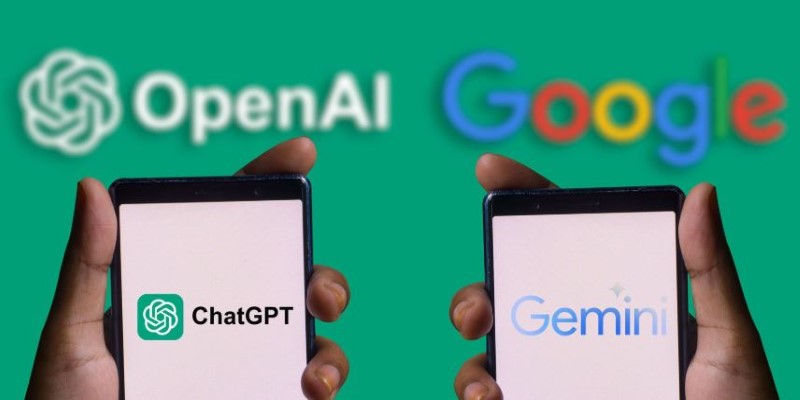Advertisement
Apple doesn't usually shout when it's working on something big. It prefers a quiet entrance, letting the product or feature speak for itself. But MM1, Apple's new AI model, has started to make some noise on its own. Not because of marketing or teasers but because of what it is and what it might mean for Apple users moving forward.
We’re looking at a model designed to be more than just another chatbot or digital assistant. It’s Apple’s attempt to reshape how artificial intelligence fits into its ecosystem. If Siri felt like a helpful sidekick, MM1 could be what turns your device into something that actually thinks ahead, not just reacts. Let’s break it down.
MM1 is Apple’s next-generation foundation model for artificial intelligence. Foundation models are large-scale models trained on vast amounts of data. They’re designed to handle many different tasks—language, images, reasoning—all with the same core brain. Think of it as building one smart model instead of creating separate tools for each job.
Apple researchers published a paper in early 2024 outlining MM1's capabilities. It's a multimodal model, which means it doesn't just process text. It looks at images, too—and understands how images and text connect. So, if you show it a photo of a receipt and ask, "How much did I spend on dinner?" it can give you a direct answer without you needing to highlight anything.
But Apple didn’t stop at just reading and writing. MM1’s architecture is built to improve reasoning, summary, and contextual understanding. In everyday terms, it’s trying to sound less like a script and more like a real person who remembers what you just said.
Most popular AI models, like ChatGPT or Google’s Gemini, live online. They’re hosted in massive data centers and rely on constant internet access. MM1 is built with something else in mind: tight integration with your devices.

Apple is known for designing things that just work, and part of that is making sure everything stays smooth and fast. With MM1, Apple appears to be working on AI that runs efficiently on iPhones, iPads, and Macs without needing to connect to the cloud every time. That changes how fast responses are, how much data is shared, and how private your interactions can be.
Here’s where MM1 really starts to carve its own lane:
On-device intelligence: Apple is prioritizing local processing. So, instead of sending your voice commands to a server, MM1 could understand and respond directly on your phone.
Tighter ecosystem fit: MM1 is being built to understand Apple’s apps and services natively. So it won’t just write emails—it might actually know which email you want to respond to and what you usually say.
Multimodal learning: Most AI models handle either text or images better, not both equally. MM1 is trying to balance the two, making it easier to work with screenshots, photos, and documents in a natural way.
Another point worth noticing is that MM1 is being trained with alignment in mind. That means the goal isn't just intelligence—it’s usefulness and safety. Apple wants MM1 to give you answers that are clear, helpful, and less likely to spiral into something unhelpful or unpredictable.
If you've ever used Siri, you've probably had a mix of good moments and a lot of "That's not what I asked." MM1 might be Apple's way of hitting the reset button, not by replacing Siri right away but by giving it a serious upgrade under the hood.
Imagine Siri, who can:
That’s the kind of assistant MM1 could bring to the table. And because Apple already controls the hardware and software, it doesn’t need to rely on outside tools. It can design everything to work together from the start.
There’s also a strong focus on privacy. Apple isn’t likely to build an AI model that sends everything you say to its servers. With MM1, there’s an opportunity to keep more of your data on your device, especially with the new Apple Silicon chips offering better support for AI tasks locally.
Right now, MM1 is a research model. It's not built into iOS or macOS just yet. However, Apple has already confirmed that large language models will play a major role in the next generation of software updates. With WWDC coming up, it's likely we'll hear more about how MM1 is being tested, shaped, and slowly introduced to everyday use.

Some reports suggest that MM1 or its future versions could be part of a new, smarter Siri launching with iOS 18. Others think Apple might offer it as part of a developer toolkit so apps can use MM1 features without building their own models from scratch.
Here’s what might be coming:
Apple’s approach has always been a little different. It waits, watches, and then releases something that fits into people’s lives without asking for much change. MM1 seems to follow that pattern—quiet but potentially huge.
MM1 isn’t about flashy demos or endless features. It’s about making your device more helpful in a way that feels natural. Apple is building something that fits into your life, not something that takes it over. Whether that means a smarter Siri, better writing tools, or on-device AI that respects your privacy, MM1 is a step in that direction. If the model continues to grow the way researchers suggest, it might be the first AI assistant that feels truly part of your device—not bolted on, not separate, just there when you need it, with answers that actually make sense.
Advertisement

ROI, task performance, fidelity, personality, safety, accuracy, and inference speed are the most important GenAI value metrics

Discover 7 questions and requests that ChatGPT is unable to answer due to privacy rules, ethics, or tech limitations.

Want robots that understand natural language? Discover LeRobot by Hugging Face—an open-source library connecting AI models with real-world robotics systems

Discover how to build a consistent, effective meditation habit using ChatGPT as your personal AI wellness assistant.

Explore the growing popularity of AI chatbots and their role in delivering faster, smarter support to users everywhere.

Google has updated its stance on AI-generated content. Learn how to navigate Google’s new policies, avoid penalties, and create high-quality content that meets search engine standards.

Need AI built for healthcare, not general use? Aloe offers focused, open medical language models designed for clinical tasks, documentation, research, and patient support

Learn why FraudGPT is a growing cyber threat and follow 10 essential steps to protect your personal and business data.

Explore how the SQL NOT IN operator really works, where it can trip you up, and how to use it safely without running into hidden pitfalls like NULL values or performance slowdowns

The industrial robotics market is projected to reach $291 billion by 2035, driven by advances in technology, factory automation, and rising global demand for smarter production systems

Discover the top features of the ChatGPT iOS app, including chat sync, voice input, and seamless mobile access.

Discover 8 AI tools every content writer should use to save time, improve quality, and streamline content creation tasks.